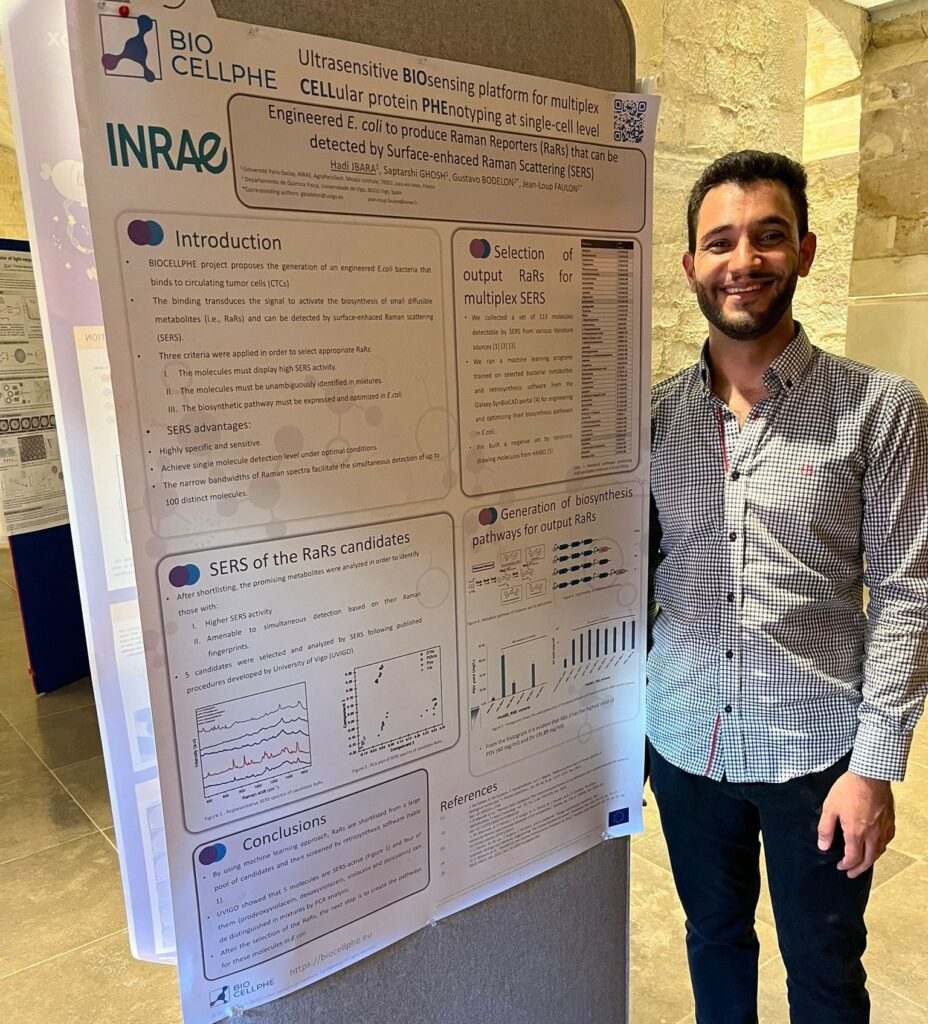
The Symposium on Synthetic and Systems Biology event on #syntheticbiology #systemsbiology, was held on 12-14th September, 2022, Paris, France.
We had two posters presented from the project, BIOCELLPHE.
Hadi JBARA of INRAE, BIOCELLPHE, presented a poster titled ‘Engineered E.coli to produce Raman Reporters (RaRs) that can be detected by Surface-enhanced Raman scattering (SERS)’. You can find the poster here.

Abstract
A critical milestone in BIOCELLPHE isthe selection of SERS-active molecules acting as reporters (i.e. Raman reporters, RaRs). Three criteria were applied in order to select appropriate RaRs: (i) High SERS activity, (ii) unambiguous identification in mixtures, and (ii) their biosynthetic pathways must be expressed and optimized in E. coli.
To this aim, a shortlisting of RaRs was obtained out by running machine learning programs trained on literature data, and by the implementation of retrosynthesis software to assess the engineering and optimization of their biosynthesis in E. coli. The SERS activity of potential candidates identified was evaluated. Additionally, in order to realize unambiguous identification of the selected metabolites, a multivariate statistical analysis of the spectral data generated for each particular candidate was implemented.
We identified four SERS-active bacterial metabolites, namely Prodeoxyviolacein, deoxyviolacein, Violacein, and pyocyanin that can potentially be used as RaRs as they meet all the above requirements. We are currently evaluating whether a fifth one (proviolacein) can also be used as a RaR.
Julien Capin of INSERM presented a poster titled ‘A synthetic trans-envelope signalling system for multiplexed protein detection in E. Coli’.
Abstract
A critical milestone in BIOCELLPHE isthe selection of SERS-active molecules acting as reporters (i.e. Raman reporters, RaRs). Three criteria were applied in order to select appropriate RaRs: (i) High SERS activity, (ii) unambiguous identification in mixtures, and (ii) their biosynthetic pathways must be expressed and optimized in E. coli.
To this aim, a shortlisting of RaRs was obtained out by running machine learning programs trained on literature data, and by the implementation of retrosynthesis software to assess the engineering and optimization of their biosynthesis in E. coli. The SERS activity of potential candidates identified was evaluated. Additionally, in order to realize unambiguous identification of the selected metabolites, a multivariate statistical analysis of the spectral data generated for each particular candidate was implemented.
We identified four SERS-active bacterial metabolites, namely Prodeoxyviolacein, deoxyviolacein, Violacein, and pyocyanin that can potentially be used as RaRs as they meet all the above requirements. We are currently evaluating whether a fifth one (proviolacein) can also be used as a RaR.
